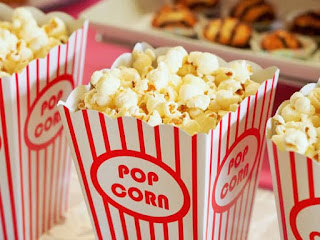The year was 1956 when Victor Gruen convinced developers that there could be a new way to shop. Until then groups of stores had an “extroverted” design. Opening outward to the perimeter of a shopping center and inward toward pedestrian walkways, these malls required a lot of walking. Instead, Gruen’s new Southdale Center Mall in Edwina, Minnesota was “introverted.”
Now with the coronavirus pandemic changing malls and stores, let’s look at the past and the present.
Shopping Mall History
The First Mall
Victor Gruen imagined a community–a space that pulled us together.
Whereas existing shopping centers were on one level, his design was for two stories, connected by escalators. A revolutionary idea, they would all have the same controlled climate, an anchor department store at each end, a skylighted garden court, balconies, and a cafe in the middle. A Time article said it was a, “…pleasure-dome-with-parking.”
This four-minute mall history has the whole story:
The Second Generation Mall
With Gruen having created the shopping mall concept, a developer named Alfred Taubman used design details to nudge the shopper around the mall.
In 2004, Taubman told Malcolm Gladwell that a mall’s shopping corridor should max at the equivalent of three city blocks–maybe 1000 feet– the farthest a typical shopper will walk. He cared about “adjacencies”–that is stores that complement each other. If you have a clothing establishment, then place a shoe store nearby. As for restaurants, busy at lunchtime, they empty and become dead space so their location has to be peripheral. Even the slope of the property mattered so more parking could be near second floor stores. Shoppers, he explained, are like water. They flow downward more easily. And the lights have to obscure the setting sun so people feel no inclination to go home.
Our Bottom Line: New Land, Labor, and Capital
As economists, we can look through a land, labor, and capital lens to see the pandemic impact on malls.
Simon Property Group (the largest mall owner) told CNBC it would limit occupancy to no more than one person per 50 square feet of space and offer shoppers free masks, hand sanitizer, and temperature tests. Hours would be abbreviated to allow more time to clean “hi-touch” areas like food court tables and escalators. In restrooms, every other sink would be taped and new decals would direct traffic flow.
Meanwhile, stores are greeting customers with hand sanitizer, disposable masks, and sticky blue mats that clean shoe soles. Hoping that people will grab and go, they are stocking shelves with less clothing and using every other fitting room. In many places, alteration services, beauty consulting, and cosmetic testers have disappeared. As for payment, the goal is no contact, and, if possible, a curbside pickup.
Returning to the first modern mall, we see that its concept of community has been reversed.
My sources and more: The best story of the first malls was from Malcolm Gladwell in The New Yorker. Then, CNBC told about the mall response to the coronavirus pandemic while The Washington Post had a detailed look at store changes.
Please note that parts of today’s Taubman paragraphs were in a previous econlife post.
Ideal for the classroom, econlife.com reflects Elaine Schwartz’s work as a teacher and a writer. As a teacher at the Kent Place School in Summit, NJ, she’s been an Endowed Chair in Economics and chaired the history department. She’s developed curricula, was a featured teacher in the Annenberg/CPB video project “The Economics Classroom,” and has written several books including Econ 101 ½ (Avon Books/Harper Collins). You can get econlife on a daily basis! Head to econlife.
















